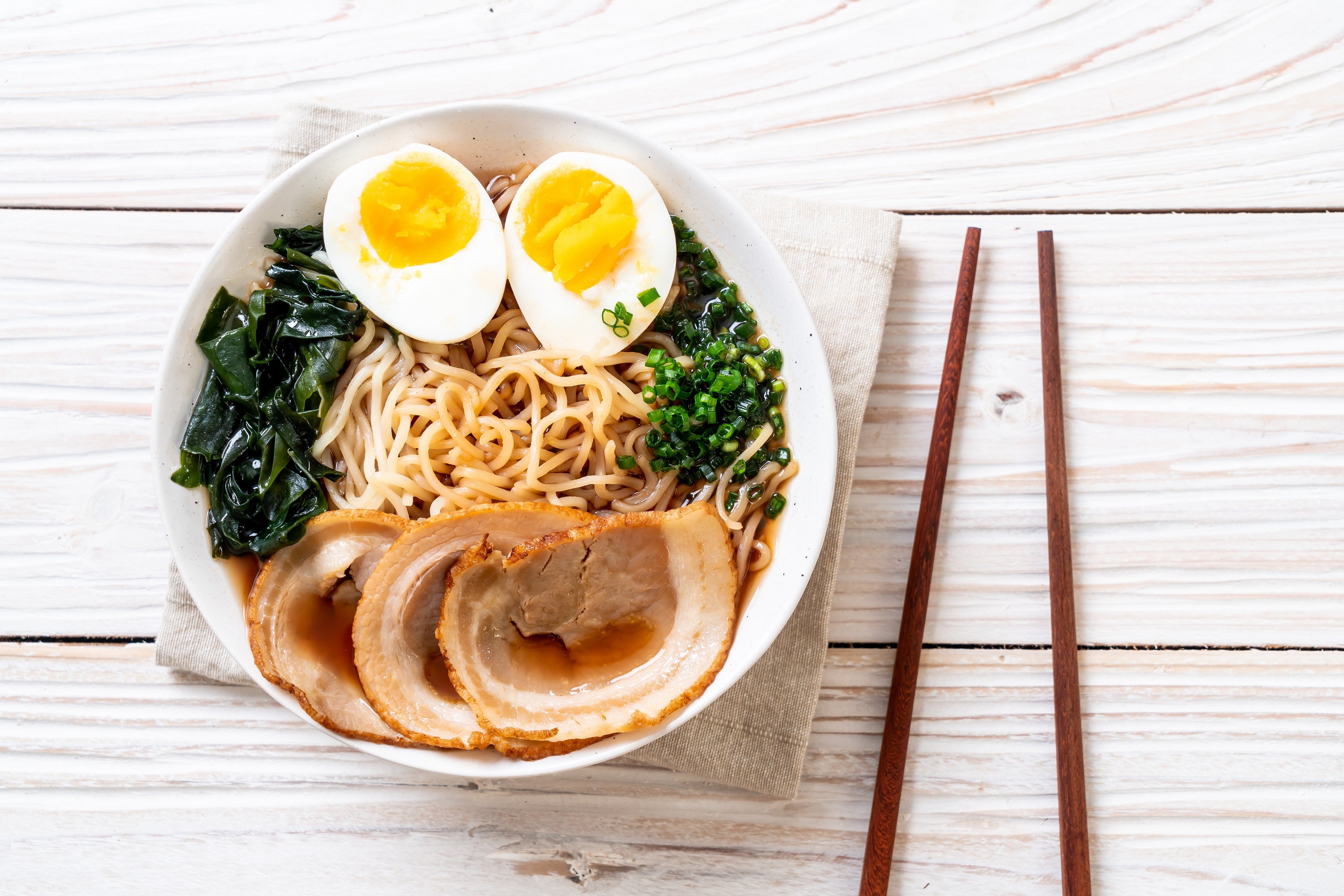Ramen is a world-famous Japanese dish with hundreds of variations. There is wide range of Japanese ramen meals, with major difference coming from the broth, or the soup. The most common and popular forms of miso are Shoyu Ramen and Miso Ramen. Here are a few characteristics that can help you differentiate between the two delicious ramen types.
Shoyu Ramen
Shoyu means soy sauce in the Japanese language. In Shoyu ramen, the broth is made with soy sauce, meaning, it is not merely added to the cooked broth, but infused into to the bones of meat (usually chicken), vegetables and water. Then everything is boiled and simmered to make a light brown broth. It has a light, herbal taste with saltiness of soy sauce, carrying around 475 kcal per bowl. Shoyu ramen has originated from the city of Yokohama and particularly popular in the Kanto region of central Japan. Traditionally it's paired with clear to brown chicken, seafood (narutomaki), and occasionally pork or beef-based broths. It is also used to flavour other ramen types like tonkotsu ramen broths.
Miso Ramen
Miso ramen is basically a broth mixed with a good amount of miso paste (fermented soy-bean paste). It can be added to any other kind of broth like shio, shoyu or tonkatsu to give a sweet-tangy creamy liquid. The tanginess is naturally derived from the fermented soybeans, while the sweetness is achieved through other ingredients added to soybeans during fermentation process. Miso ramen originated from the Northern Hokkaido of Japan during 1960s due to the need for bold, heartier version of soup in cold weather. It is not just loved by Japanese and also everyone around the world. The toppings such as sweet corn, meat and bean sprouts also mostly commonly used in this type of ramen, with an average calorie content of 550 kcal per bowl. The rich soybean paste offers a myriad of benefits to the human body.
Now you can experience the authentic taste of miso ramen and shoyu ramen with Singarea’s wide range of ramen products. Check out our collection of miso and shoyu items from top Asian brands.
If you want to learn more about asian food like miso and shoyu or other korean and Japanese dishes, or chinese dishes you can check out our articles on
Difference between Mandu and Gyoza: A Detailed Comparison (singareas.com)
Chashu Guide: Unveiling the Secrets of Japanese Pork Delicacy (singareas.com)
Shoyu vs Tonkotsu Ramen: Flavor Showdown (singareas.com)
Kimchi: A Spicy and Fermented Korean Side Dish (singareas.com)
You can also visit singareas.com to find some amazing collections and products related to chashu.

